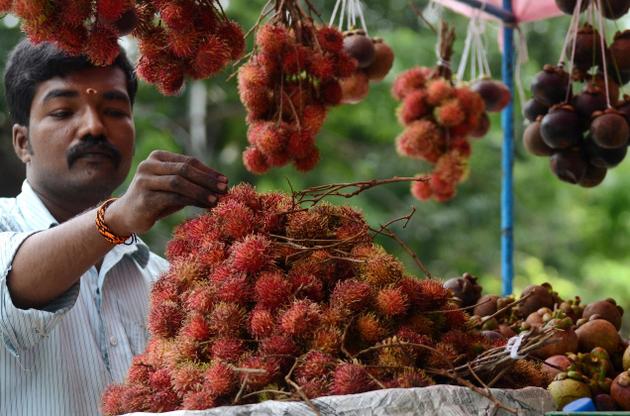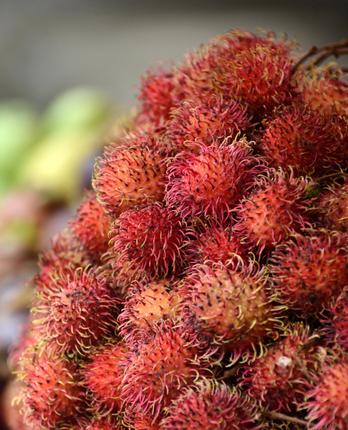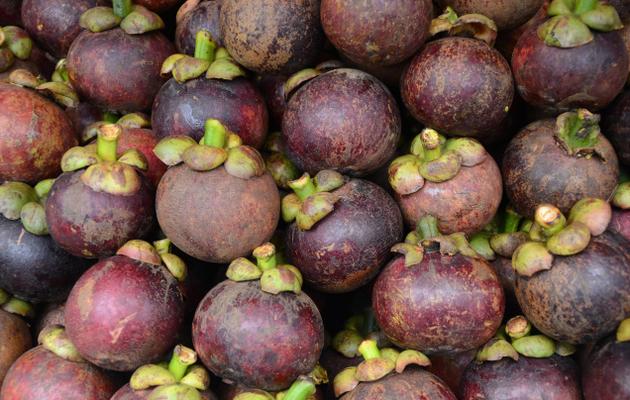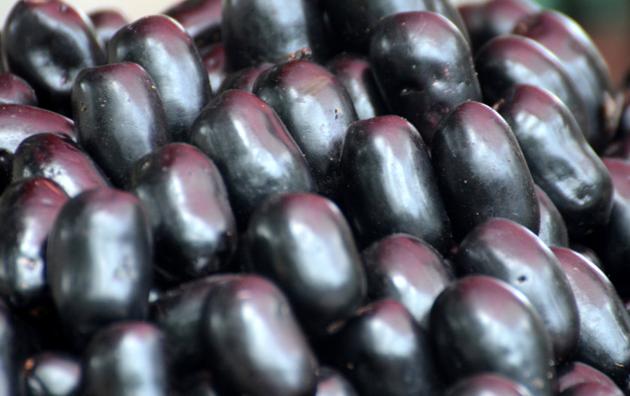
Ah…the taste. Refreshing, sweet and juicy. I relish the pearly white flesh of rambutan and smile. “It takes nearly 10 minutes to enjoy a single fruit,” says K. Subramani as he arranges the decorative red fruits in a mound on his fruit cart near the Race Course corner.

Rambutan mimics lychee in taste and form. Once you peel the spiky red rubbery skin, you find a translucent oval fruit, firm and juicy. Subramani says rambutan helps control blood sugar levels. “Diabetics and those with blood pressure buy it regularly,” he says.
Rambutan is seasonal and available from June to August. It comes from Barliyar, near Mettupalayam.
“People still go in for apples and oranges, which are imported and preserved. They are stale by the time they reach customers. Rambutans are fresh as they are locally grown. Sadly, many are still not aware of its health benefits.”

Another purple mound on his cart catches my eye. That is mangosteen. I hold the fruit with both hands, pull out the fibrous skin and scoop up the juicy white flesh. It is delicious. “Mangosteen is cooling. It helps heal stomach ulcers and internal surgery wounds. Many doctors buy it regularly,” says Subramani.
Subramani’s day begins at the crack of dawn at the Town Hall market. Every single day, about 3,000 kg of mangosteens arrive from Tenkasi near Madurai. He supplies the mangosteens to about 50 carts and shops in Race Course, Raja Street, Ukkadam and Mettupalayam Road. Then, it’s business as usual at his cart in Race Course, till 8 p.m. He also makes a powder out of the dried skin of mangosteen. This can be consumed with milk or curd, he says. The soft and crunchy seed of Rambutan can also be used in powder form with milk.

Then, there are jamuns, another seasonal fruit that comes from Andhra Pradesh. “Jamuns are always popular and the sweet-sour taste is a big hit among everyone. People now make juice with jamun pulp, salt and a squeeze of lemon. A lot of my customers substitute their morning tea with a drink made from jamun seed powder and warm water for a healthy start.” An added attraction at his cart are plump guavas that have come all way from Ayakudi in Palani.
To know more, call Subramani at 96984-45453.
Price
Rambutan (Rs.200 a kg), Mangosteen (Rs. 200 a kg) and Jamun (Rs. 240 a kg)
Where to find them
At the Race Course corner (opposite to Big Bazaar)
When available
Every year, the fruits are available only for three months. You will find them only from June to August
source: http://www.thehindu.com / The Hindu / Home> Features> MetroPlus> Food / by K. Jeshi / Coimbatore – July 09th, 2013